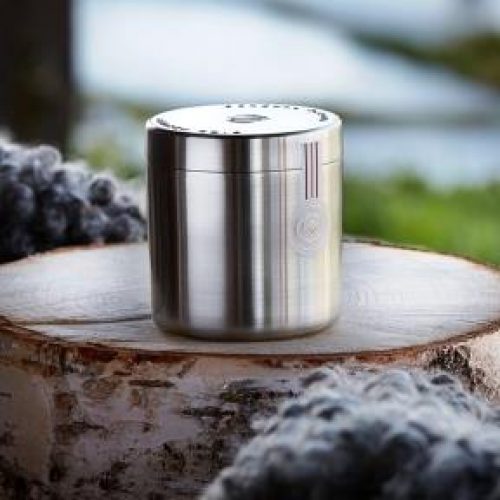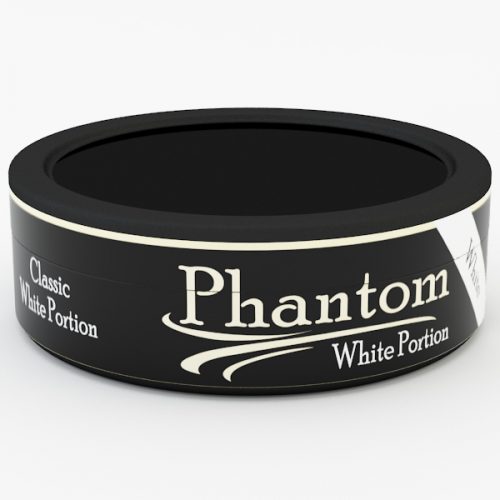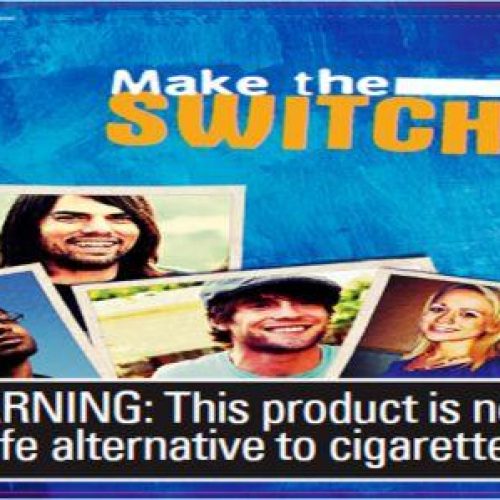RJ Reynolds – The State of Tobacco in 2011
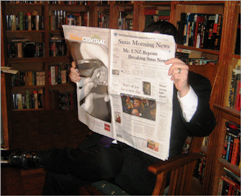 Regardless of your (or my) opinion of the product Camel SNUS as compared to Swedish Snus, there is no denying that Reynolds American and their RJRT division have been largely responsible for introducing the word “snus” into the American vocabulary. Looking back, the evolution of Camel SNUS presents a good mirror of public and government attitudes in the US as well as a peek into the possible future for American tobacco lovers.
Regardless of your (or my) opinion of the product Camel SNUS as compared to Swedish Snus, there is no denying that Reynolds American and their RJRT division have been largely responsible for introducing the word “snus” into the American vocabulary. Looking back, the evolution of Camel SNUS presents a good mirror of public and government attitudes in the US as well as a peek into the possible future for American tobacco lovers.
In January 2006, there was no Camel SNUS and I was still a cigarette smoker. Like almost all Americans, I had never heard of Swedish snus. My local tobacco store of choice, Up in Smoke, may have sold General Snus in 2006, but it was never called to my attention or even noticed.
The important thing is that Up in Smoke was selling General Snus in the summer of 2007. That’s when I received a coupon in the mail for the first version of modern Camel SNUS and later that day, heard of Swedish snus for the first time. The rest is snus history, although not uniquely mine. Most American users of Swedish Snus first heard of snus because of Camel SNUS and to a much lesser degree, Altria’s Marlboro Snus.
Reynolds Total Tobacco Strategy
I’ve written pretty extensively over the years on the evolution of Camel SNUS and it’s marketing; you’ll find it all on SnusCENTRAL.org. What I want to focus on is the state of snus today. A little background is necessary to put it all in perspective.
RJRT began field tests of snus in April of 2006. This Camel SNUS was actually Swedish snus; made by BAT for Reynolds. It came in a traditional round snus can and was test marketed in Austin TX and Portland OR.
In the first quarter of 2007, Reynolds implemented their “Total Tobacco Strategy” initiative. Being a former Cold Warrior, I envisioned Susan Ivey and her RJRT Big Tobacco Politburo sitting in a darkened smoke-filled room drawing up the future of tobacco lovers and nicotine addicts. In the film version, Ms. Ivey looked a little bit like Joseph Stalin but in an attractive way. Writing this in 2011, I could even call the Total Tobacco Strategy by the communist term ‘Five Year Plan’.
During an interview with Reynolds Spokesperson and Director of Communications David Howard, I asked him (minus Stalin) just how accurate my scenario was. Although I still believe my version would make a much better screen play, his explanation differed significantly from mine.
According to Howard, based on tobacco consumers issues, the political climate, market situation, and other socio-economic variables, the Total Tobacco Strategy (TTS) was designed to maximize the value of existing and future tobacco products in a changing American climate.
Other than making a great PowerPoint slide for a shareholder’s meeting, what did that translate to in terms of real business impact 5 years into the initiative? Quite a lot, as it turns out.
In regards to cigarettes, the total market has been and continues to shrink. For just December of 2010, Goldman Sachs reported that AC Nielsen c-store data (US) for the 4 weeks ending 12/25/10 showed a 7.6% cigarette sales volume decrease. Despite this, RJRT has a larger cigarette market share today than it did in 2007 while cigarettes comprise 85% of the company’s current profits. The TTS was in large part responsible for these results: Reynolds has narrowed their focus in large part to the Camel and Pall Mall brands. Winston and the other RJRT ancillary cigarette brands receive less marketing support but their sales by percentage is still larger than it was in 2007.
Just last month, Reynolds announced their intent to sell their wholly owned subsidiary, Lane Ltd. to Scandinavian Tobacco Group A/S. Lane Ltd. produces lit tobacco products like pipe tobacco and roll-your-own (RYO) tobacco. Ironically, Scandinavian Tobacco Group A/S is 49% owned by Swedish Match AB, the largest Swedish snus manufacturer in the world.
Camel SNUS and the Smokeless Tobacco category
While the cigarette market has been slowly shrinking, the smokeless tobacco market has been growing. This has not gone unnoticed by tobacco product manufacturers in the US or abroad. Many rushed out their own snus or snus in name only products looking for quck success. Within the last three years, most of these brands failed; Triumph, Gran Prix, Klondike, Nordic Ice, Tourney and Discreet being the most visible. If you never seen or heard of these brands, don’t feel bad; you’re not alone.
Big and Small American tobacco underestimated the near total ignorance of the American public on the differences and advantages of Swedish-style snus. In Sweden, snus has been a known entity and cultural icon for over 200 years. In the US, moist snuff and chew had become the cultural smokeless tobacco products.
Snus and moist snuff are very different but Americans lack of knowledge compounded with deliberately misleading to just lazy inaccurate reporting by the American media further muddied the waters. Most of Big American tobacco went back to targeting moist snuff and chew users by promoting and expanding their snuff offerings.
Reynolds was undeterred. While sales of Camel SNUS have been decreasing the last couple of years, Reynolds commitment to American snus has not. Of late they have redesigned their packaging to be smaller and to my eye, more attractive. There are still no catch-lids (used snus storage) on the Camel SNUS cans but Howard told me the popularity of catch-lids by snus users “has not gone unnoticed”. Most importantly, the Camel SNUS marketing message has undergone an unprecedented evolution.
In 2007, Camel Snus was “Just like Swedish snus but better”; emphasis on “just like Swedish snus”. I was rather critical of this approach. It was probably used then for the very same reason I disliked it: Google ‘snus’ and Swedish snus were the only snus results which popped up.
This message evolved into giving graphic examples targeting smokers of common situations where you can not use cigarettes but you can use snus; on airplanes, at restaurants, at work, and in bars. Mentions of Swedish snus became less and less frequent. The marketing message became “When you can’t smoke, SNUS”. Reynolds was positioning Camel Snus as a smoking accessory, not alternative. The very low levels of free nicotine in Camel Snus reinforced this message physically to the nicotine-addicted smoker.
This message of Camel SNUS being a complementary product to cigarettes for smokers as opposed to a replacement continued in various forms until January 1st, 2011.
In a pre-New Years Day surprise, Reynolds outraged the anti-all-tobacco zealots with the debut of their “2011 Smoke-Free Resolution” ad. The ad states that Reynolds supports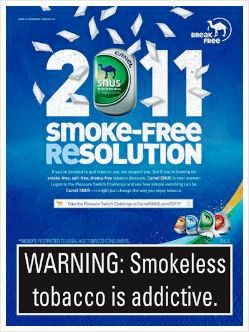 smokers who have decided to quit using tobacco. The ad continues “But if you’re looking for smoke-free, spit-free, drama-free tobacco pleasure, Camel Snus is your answer.” The ads are very careful not to specifically state that Camel Snus should now be considered a smoking cessation method or touting any of the reduced health risks associated with smoke-free snus over lit-tobacco products like cigarettes. Either would most certainly bring down the wrath of FDA.
smokers who have decided to quit using tobacco. The ad continues “But if you’re looking for smoke-free, spit-free, drama-free tobacco pleasure, Camel Snus is your answer.” The ads are very careful not to specifically state that Camel Snus should now be considered a smoking cessation method or touting any of the reduced health risks associated with smoke-free snus over lit-tobacco products like cigarettes. Either would most certainly bring down the wrath of FDA.
Mr. Howard reiterated to me the statement he first made to the Winston-Salem Journal; this was Reynold’s first campaign aimed specifically at encouraging smokers to switch to Camel Snus. “A lot of adults make a decision to quit smoking this time of the year,” he said. “For those making that attempt, but still wanting the pleasure of tobacco, we’re saying ‘Here’s an option’.”
Regardless, the message of the Reynolds 2011 Take the Pleasure Switch challenge” Campaign; the suggestion of a tobacco alternative for Camel (and by extension, all) cigarette smokers by any Big Tobacco cigarette making company is startling and game-changing. Our friend and SnusCentral.org contributor Bill Godshall of Smokefree Pennsyvlania said that this Camel Snus campaign was the first and only time he could think of where a cigarette manufacture supported the option of quitting cigarettes to their consumers.
It also makes perfect sense for a company who focused in 2007 on being in step with and ahead of the ever-evolving tobacco public and regulatory climate in America.
Compare this to Lorillard Tobacco, who now trembles at the approaching FDA Report on Menthol. Compare this to Altria who recognizes a need to maintain some kind of presence in the snus market but still has no idea what to do with it. In that regard, Marlboro Snus and Skoal Snus are worthy of their own article for 2011 and will receive one by me in the near future.
Camel Dissolvables are not candy, damn it!
Since their introduction, my theory on Camel dissolvable products like Camel Orbs, Strips, and Sticks has been a cynical one. Quite simply, I considered them throw-away products for use in advancing Camel SNUS. Granted, nicotine gum is never described as kid-friendly by Matt Myers and the other anti-all-tobacco zealots but that’s because nicotine gum is made by Big Pharma; not Big Tobacco.
The Camel Dissolvables quickly became and seemed like such an easy target in a war supposedly about “saving the children” that my assumption was that they were a bargaining chip Reynolds could throw away when needed. All the uproar over these “child targeted nicotine candy” products would lead to FDA figuring out a way to ban them; all the while giving Reynolds the opportunity to advance Camel SNUS and ultimately give FDA a “victory” against products designed as a diversion. The January decision by Reynolds to remove the dissolvables from their current test markets validated my opinion.
I presented my carefully constructed view of the Camel dissolvable products to Mr. Howard for a response. Remember that David Howard is an official spokesman for the Reynolds tobacco empire. He is a public relations professional quite accustom to responding to attacks on Reynolds’ tobacco products and tobacco in general. I was expecting a simple no comment, yes with a chuckle, or no as an answer. I was not expecting an angry and passionate defense. I had never thought I could invoke one from an official spokesman for Big Tobacco. I cowered in my chair as Howard began speaking.
He tersely stated I was “completely inaccurate” in theorizing that the Camel Dissovables were throw-aways. “Completely inaccurate” in public relations-speak translates as something close to “You are a lying piece of garbage” Further, while the Camel Dissolvables were being taken out of the current test markets, they were going to be introduced into new markets at the same time. To my relief, I was then no longer the focus of Mr. Howard’s ….frustration.
Howard and Reynold’s frustration is the constant mentioning of the words “candy, mints, and chewing gum” in the same sentence as Camel Dissolvable products. “Camel Dissolvables are only for and marketed to adult tobacco consumers. We make that very clear in our advertising and point of sale materials. The products are clearly labeled with all required tobacco warning labels, are sold from behind the counter like other tobacco products, and can only be sold to adults legally of age to purchase tobacco products in that State”.
I can understand Reynold’s frustrations. Camel Orbs are marketed as containing 1mg of bio-absorbable or free nicotine per Orb. Nicotine gum, on the other hand, contains either 2mg or 4mg of nicotine per piece. Nicotine gum is sold on store shelves easily assessable to children, if my Walmart is any example. Instead of warning labels, one brand of Nicotine Gum even carries the endorsement of the American Cancer Society. Nicotine gum also comes in child-enticing flavors such as Cinnamon Surge and Mint Chill.
FDA has approved Nicotine Gum as a smoking cessation product. Manufacturers of any smoke-free tobacco product are forbidden under penalty of death to imply, let alone state, that their products in any way, shape, or form, are products which can be used by smokers to quit cigarettes. In the case of the New Year Resolution Camel Snus campaign, RJR’s attorneys made very certain that Camel Snus was represented as something to consider instead of cigarettes, but not as a way to quit smoking.
Inevitably as with all anti-all-tobacco propaganda, it was time to roll in “the children” to demonize Camel Dissovlables. In the May issue of PEDIATRICS, a “study” entitled Unintentional Child Poisonings Through Ingestion of Conventional and Novel Tobacco Products was published. The lead author/researcher of the article was not surprisingly the familiar Harvard researcher Dr. Gregory Connelly.
Dr. Connolly was a key member of FDA’s Tobacco Products Scientific Advisory Committee (TPSAC). The FDA was petitioned last year by Philip Morris USA to have Connolly and three other anti-all-tobacco-zealots on the committee removed for completely lacking the objectivity required. Indeed, Connolly has always been fervently opposed to anything with the word “tobacco” included it.
FDA Tobacco Czar Dr. Larwrence Detyon rejected the petition. None the less, Connolly resigned from TPSAC in December 2010 for “personal reasons”. Insiders say his lack of objectivity and extreme anti-all-tobacco bias wasn’t the only reason he suddenly left TPSAC.
You may also remember Dr. Connelly from the anti-all-tobacco hyped story Kalla Fakta TV4 broadcast October 25, 2009. The gritty Kalla Fakta investigative news team somehow discovered (maybe they read the label on the snus can?) that Swedish Match snus recipes included E500 which enhances nicotine uptake!!! The mysterious and deadly sounding E500 is more commonly known as simple sodium carbonate. Sodium carbonate is used as an acidity regulator in not only Swedish Match snus, but virtually all Swedish Snuses. E500 has also been long approved by the Swedish NFA as a food additive…another fact conveniently ignored.
Dr. Greg Connelly was the US “expert” appearing in the Kalla Fakta story. He was in a near panic over over the sodium carbonate revelation. “This will make it harder/impossible for people to quit using snus!”, he exclaimed in horror. My response was the obvious “so what?” Especially if they switch from cigarettes to Swedish snus, the level of potential harm drops 99% to about the same level as drinking a cup of French Roast coffee.
Today, these experts tell us that drinking one can of diet soda a day doubles your chance of having a stroke. If it is a cola with caramel coloring in it, you may as well just check yourself into a hospice and wait for death.
I need only one paragraph from Unintentional Child Poisonings Through Ingestion of Conventional and Novel Tobacco Products to make my point. Oh, did I mention the article also contains a graphic of a box of Tic Tacs and Camel Orbs side-by-side? If you squint really hard, they look almost identical….intentionally.
Recent estimates of product-related poisonings involving children, based on a national probability sample of US hospital emergency departments, underscore the insufficiency of existing child-resistant packaging and the need for additional child-poisoning prevention strategies.1 Unintentional ingestion of tobacco products is a major reason for infant and child toxic exposures reported to poison control centers throughout the nation .2 The large majority (90%) of such accidental poisonings in the population involve children <6 years of age.2 In addition to conventional smokeless tobacco products, novel smokeless tobacco products, including dissolvable, compressed, tobacco products called Camel Orbs (R.J. Reynolds Tobacco Company, Winston-Salem, NC), are now of major concern, with their discreet form, candy-like appearance, and added flavorings that may be attractive to young children.
The first sentence of the quoted paragraph is generic: it applies to all child poisonings; not just tobacco products. It isn’t relative to the topic and appears to have been inserted to create a negative perception, not to state facts.
The 2nd and 3rd sentences are more frightening; citing unintentional ingestion of tobacco products as a major cause of infant and child poisoning and a whopping 90% of those involving children 6 years of age and younger. What Dr. Connelly and company forgot to mention and Mr. Howard helpfully provided was that tobacco product related child poisonings only represent 0.5% of all child poisonings nationally.
The final sentence essentially translates as focusing just on Novel Tobacco Products like Camel Orbs, children may be attracted to them because of their appearance and flavorings. It does not state, nor does it anywhere else in the article, that any children have actually been poisoned by Camel Orbs or other dissolvable tobacco products. In fact, the closest the study comes to addressing this is by citing one 3 year old who ingested snus and two 2-3 year old children who suffered mild poisoning from eating snus.
According to Dr. Connelly and cohorts, these incidents occurred because the product “was sold without explicit warning to protect against child ingestion”. It’s sad I need to point this out to Dr. Connelly, but since their study is concerning unintentional child poisonings, the study conclusion seems to be had there been explicit warning labels on the snus can, the 2 and 3 year olds cited would have read them and not ingested the product.
Correct me if I’m wrong, but 2 and 3 year old children can’t read. I’d think even a 5 or 6 year old would lack the vocabulary to comprehend the words “child ingestion”. Let’s not even get into the fact that these 3 children each consumed an isolated snus portion(s) probably found on the floor. Is the study suggesting that every single portion of snus have an individual warning label? If so, the children cited would probably have eaten the warning label along with the snus; they still couldn’t have read it.
Unintentional Child Poisonings Through Ingestion of Conventional and Novel Tobacco Products was just so over the top that even RJRT felt compelled to issue a response.
The hypocrisy, statistical manipulation, twisting of facts, and deceptive statements of the anti-all-tobacco zealots is impossible to defend and frankly still amazes but no longer surprises me. Neither does Dr. Connolly and his fellow travellers, of which there are too many.
The Camel Dissolvable products have never been available in my area. I’ve never tried them and can’t attest to the taste or the effectiveness one way or the other. Since they only contain 1mg of nicotine each according to Reynolds or 0.83mg per pellet according to Dr. Connolly, I do know a nicotine-addict attempting to quit cigarettes would have to consume a large amount of dissolvables each day to avoid nicotine withdrawal.
From my experience, the same is true for Camel SNUS. To my surprise, Mr. Howard informed me that Camel SNUS; an alternative to cigarettes, contains no more free nicotine than the Camel SNUS from the “When you can’t smoke, SNUS” days.
As for Dr. Connelly and his contention that the solution to this statistical speck of an issue boils down to more warning labels? Do some research into the cost of a step ladder in 1960 and the cost of an identical ladder today. Factor in inflation. The huge difference remaining is the cost of the litigation which led to the costly regulations requiring the expense of making and sticking all those silly warning labels on ladders which you the consumer now pay for.
If you need a warning label stating that if you stand on the top of a ladder you may fall off, you probably shouldn’t be using a ladder in the first place….especially if you are a 2-3 year old child.
LARRY WATERS
FORMER Smoker; CURRENT Swedish Snus User
Reporting for SnusCENTRAL.org
About author
You might also like
General Kardus Fäviken 2016 Snus by Swedish Match Released!
General Kardus Fäviken 2016 is one of the most exciting Kardus special edition snuses ever issued; at least since my favorite Kardus Superior Edition 2009 was released. General Kardus Fäviken
EXCLUSIVE: Snus Review – Phantom White Portion Snus and more V2 Tobacco Snus News
For the last two days, I’ve been using a snus I’m pretty confident most of you aren’t: Phantom Classic White Portion Snus by V2 Tobacco. The reason for my confidence?
New Camel SNUS Ads: Taking on the FDA Status Quo
RJ Reynolds is introducing their latest ads inviting smokers to switch from cigarettes to snus. Reynolds introduced this unprecedented advertising concept from a cigarette manufacturer at the very end of

